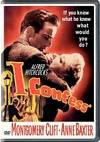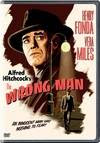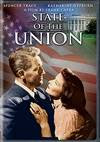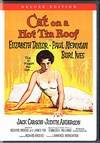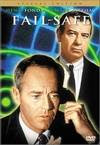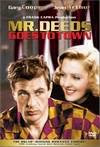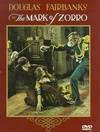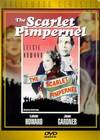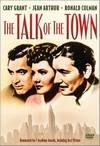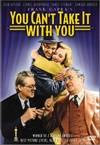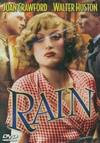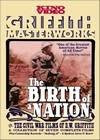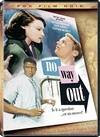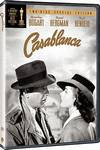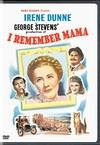The Miracle Woman
Elmer Gantry
The Night of the Iguana
Let me begin by saying that I believe there is a Supreme Being and that he or she is known by many different names and worshiped in many different ways. My wife also believes in God but is convinced that the Supreme Being is a man because she says a woman wouldn’t put up with the mess that mankind has made of “Her” garden that we call Earth. As a child, I attended an Episcopal church in New York and a Baptist church in North Carolina when I visited by grandmother during the summer; my wife was raised a Catholic. And while we both believe that Christ did exist and his teachings are words that we all should live by, we are very critical of religion – although I am more tolerant of churchgoers because I enjoy the feeling of community I get while sitting in a pew.
However, we both have a problem with religion – a problem that stems from all the pain, suffering, intolerance and violence that have been sanctioned by the different religions in the name of their God. Also, we have seen more than a few self-righteous religious hypocrites who preach piety and then engage in what they themselves claim are sinful acts.
This inability of messengers of God to practice what they preach and their inner conflicts caused by their shortcomings are what I will examine in this posting’s triple feature – The Miracle Woman (released in 1931 in black and white), Elmer Gantry (1960, color) and The Night of the Iguana (1964, b&w).
Florence Fallon, the main character in The Miracle Woman, is the daughter of a reverend who has died after learning that his congregation is having him replaced. Florence blames her father’s death on the congregation and tells them so during what was supposed to be her father’s last sermon, pointing out their scandalous behavior and emptying the church with her ranting. However, one person, a man passing through the town named Hornsby, stays behind and talks Florence into using her knowledge of the Bible to become an evangelical. Thus, Sister Fallon is born.
They establish a tabernacle that employs a band and college cheerleader-like choir that opens the show, which has the feeling of a circus and draws standing-room crowds to listen to Sister Fallon preach and watch her cure the ailments and deformities of people in her audience with her touch and her prayers. These invalids, however, are just shills paid to pretend that they have been healed. The show really begins with Sister Florence entering a cage filled with lions and asking someone from the audience to join her. But the shill has fallen asleep in the front row and no one else seems willing to enter the cage with the lions until a blind man named John Carson stands. John was an aviator during World War I, when he was wounded and lost his sight. He was brought to the tabernacle by his landlady, is amused by the theatrics and agrees to join Sister Fallon in the lions’ cage so that the show can continue. Although John is not cured by the evangelical, the crowd loves it – and so does Hornsby, who is Sister Fallon’s manager.
After her performances, however, Hornsby tries to keep a tight rein on Sister Fallon. His reasoning for this is that he is concerned that she is might do something that would damage her reputation. However, he and his staff spend the rest of the night partying – and Hornsby, who wants to be more that just her partner, asks Sister Fallon to join him in the revelry. She declines.
But wanting to get some fresh air, Sister Fallon leaves the tabernacle and runs into John, who has been waiting for her at the back door. Sister Fallon offers to take John home in her chauffer-driven car and then goes upstairs with him to his apartment, where he entertains her with some toys – including a puppet named Al. Sister Fallon enjoys the visit but is confronted by an angry Hornsby when she returns to the tabernacle. Hornsby, who is responsible for the death of a shill who had threatened to go to the police with evidence of embezzlement of funds supposedly collected to improve the tabernacle, says he will see that Sister Fallon takes the fall for the murder. Nevertheless, Sister Fallon defies Hornsby and continues seeing John. The evangelical and the blind aviator fall in love and she confesses what he already knows – that she is a fraud.
One night, Sister Fallon and John are interrupted at the beach by Hornsby. To keep Hornsby from hurting John, Sister Fallon agrees to leave with her manager and has her chauffer take the blind man home. John then enlists the help of his landlady and they break into the tabernacle and go up to Sister Fallon’s office, where he has the landlady describe the room to him in detail. The next night, just before Sister Fallon is scheduled to go on stage, John enters Sister Fallon’s office and pretends that he has been cured by her prayers. But Sister Fallon sees through the ruse. Then Hornsby barges in and, thinking John can in fact see, the manager knocks out the blind man and ushers her out of the room and leads her to the stage.
But by now, Sister Fallon has had a change of heart and decides to confess her sins to the audience. Hornsby doesn’t catch on until she is on stage and in his frantic effort to bring down the curtain, he accidentally starts a fire. As the crowd rushes out, Sister Fallon, remaining on stage with the fire raging around her and gets them to calm down by singing as they exit the building. John recovers consciousness and makes his way down to the stage and calls out to Sister Fallon. She answers just before fainting from the smoke. John, responding to her voice, finds her passed out on the stage, picks her up and carries her to safety.
The next time we see Florence, she has given up her lucrative scam and joined The Salvation Army. As the movie ends, she is happily reading a telegram from John in which he proclaims his love over and over. He also tells her he is about to go into surgery, hoping to have his sight restored.
Elmer Gantry tells a similar story. The title character had once attended a seminary, studying to become a reverend. However, his affair with (if I remember correctly) a preacher’s daughter leads to his dismissal from the seminary. When the movie begins, the unemployed Gantry – who works as a traveling salesman, when he can find work – hustles drinks in a bar by telling racy stories to whoever will listen – and many do. But Gantry’s love of God remains strong, as is demonstrated by a passionate sermon he delivers to his benefactors and his visit to a black church where he surprises the congregation when he enthusiastically joins them in singing praises to the Lord.
Gantry’s wanderings lead him to a revival meeting being led by Sister Sharon Falconer. After initially being rebuffed by Sister Sharon, he manages to charm his way into the good graces of Sister Rachel, a rather shy member of the evangelist’s entourage who in turn helps pave the way for Gantry to join the evangelical crusade. Soon thereafter, Gantry becomes Sister Sharon’s opening act, enthralling the audience with his charisma and powerful style of preaching. His success emboldens him to make romantic advances toward Sister Sharon, who tells him she is not interested in men who partake in alcohol, tobacco and woman chasing.
Until Gantry joined Sister Sharon, her crusade had targeted only small rural communities. But Gantry convinces Sister Sharon and her manager to take their crusade to a big city. During negotiations with community leaders, Gantry convinces them that Sister Sharon’s ministry will be a financial boon for the city. But after the crusade enters the city and things appear to be going well, a reporter traveling with the entourage named Jim Lefferts, writes a scathing article calling Sister Sharon and Gantry frauds and questioning where the money they have collected goes. This is enough to scare one of the city’s businessmen who had backed the crusade. He threatens to withdraw his support, but Gantry digs up some dirt on him and the businessman relents. Then Gantry tries to offset the effect of the newspaper article by leading raids on brothels. Unfortunately for him, though, one of the women in one of the brothels is the girl who Gantry seduced when he was in the seminary. Gantry then does a quick about face and convinces the police not to arrest the girls.
But Lulu Bains, the woman from Gantry’s past, has revenge on her mind. She arranges for Gantry to meet her in her hotel room, where a photographer waits outside her window to take pictures of their dalliance. Gantry, however, refuses to play along because he is in love with Sister Sharon. But Lulu does manage to maneuver the in-this-case-innocent Gantry into seemingly provocative positions which are captured on camera. When the newspaper prints the photos, the public turns against Gantry, which in turn tarnished Sister Sharon’s crusade. Any hope that Gantry had about Sister Sharon being able to love him is now dead. On top of that, the photos instigate a riot at the next revival meeting – which is attended by Lulu, who was there to extract blackmail from Sister Sharon. But after watching Sister Sharon calm the crowd, Lulu finds that she cannot bring herself to carry out her mission and runs from the revival tent. Gantry follows but by the time she catches up to her, Lulu has been beaten by her pimp for not getting the money. After Gantry comforts her, Lulu goes to the newspaper and recants her previous claim that she was having an affair with Gantry.
Vindicated, Gantry returns to the revival tent for the next meeting and watches Sister Sharon, apparently for the first time in her evangelical career, remove a person’s disability by her touch and prayers – restoring the gift of hearing to a previously deaf follower. Unlike the phony faith healer in the previous movie, Sister Sharon had never before tried to heal anyone. However, just before the “miracle” she suddenly began to believe that she really was an instrument of God – and that belief was justified by her “miracle.” Sister Sharon’s success sets off a joyous celebration inside the tent, but one of the celebrants carelessly discards a lit cigarette. The ensuing fire quickly rages out of control, and while everyone else under the tent is trying to get out, Gantry fights his way into it. Unfortunately, he is unable to reach Sister Sharon before she is engulfed by the flames.
The next day, Gantry and Lefferts are sitting just outside the burned tent when a crowd of Sister Sharon’s followers gather around them and ask Gantry to forgive them for Sister Sharon’s death. After Gantry prays with them, Sister Sharon’s manager asks Gantry if he would like to take over the ministry. Gantry turns him down and (again, if I remember correctly) suggests that Sister Rachel take charge of the ministry. Gantry leaves the scene, presumably returning to his previous life before he joined Sister Sharon’s entourage.
The Night of the Iguana is about a defrocked minister named T. Lawrence Shannon who now works in Mexico as a guide for busloads of tourists. The bus is driven by a young American named Hank. On this particular trip, the tourists are a group of schoolteachers led by a decidedly priggish woman named Judith Fellows. Also along for the ride is Judith’s 18-year-old niece Charlotte, who is smitten by Shannon. The former reverend, who was defrocked for amorous adventures and whose current love affair is with alcohol, is completely uninterested in Charlotte’s advances. But being the hormone-charged teenager that she is, Charlotte sneaks into Shannon’s hotel room, where she is discovered by her aunt. And although nothing happened, Judith informs Shannon that she is going to have him fired just as soon as she gets to a telephone.
In an attempt to avoid the inevitable, Shannon hijacks the bus and bypasses the hotel where the tour is scheduled to stay, taking them instead to the rundown seaside resort (for lack of a better word) owned by Shannon’s friend Maxine. Originally, Shannon was the friend of Maxine’s husband, but he has been dead for several years. Maxine is kind of sweet on Shannon, however, and he knows that when things in his life are going downhill, he can always rely on Maxine to help him regain his composure.
After the tourists arrive, Maxine welcomes another pair of guests – Hannah Jelkes and her grandfather Nonno. Hannah is a sketch artist and Nonno a poet who is working on another poem. They eke out a living by selling their artwork. Also at the resort are three young Mexican men who work for Maxine. Aside from their jobs, Maxine also flirts, dances and occasionally sleeps with them.
Judith finally gets to a phone and complains to the tour company about Shannon, who is fired. Meanwhile, Charlotte goes down to the bar on the beach and shakes her groove thing at Maxine’s employees. They in turn begin to take liberties with Charlotte before Hank comes to the rescue. However, Hank’s talents as a white knight are negligible and he finds himself embarrassed and injured – slightly – by the resort’s hired help. Charlotte rushes to succor her newfound Prince Charming and when he has sufficiently recovered, he gathers the tour group together and they leave Maxine’s.
After they have gone, Shannon’s downward spiral continues and he has to be restrained. Hannah sits with him while Shannon is tied up in a hammock. Seeing Hannah with Shannon, Maxine assumes that the two will become more than just friends. But all Hannah is interested in is helping Shannon regain his sanity. Nonno, meanwhile, finally completes his poem just before he dies. Shannon is then asked to say a few words over Hannah’s dead grandfather. After Maxine sees how Hannah has helped Shannon, she offers to give the resort to them and leave. But Hannah is no more interested in being Shannon’s lover than he is interested in being hers. Hannah then leaves the resort and Shannon and Maxine decide that the best thing for both of them is to stay together.
In case you haven’t noticed, the main characters in all three stories are seriously spiritually flawed – their faith suffers from a crisis of conviction. Florence Fallon grief over her father’s death turns her into the kind of religious hypocrite she denounces when the film begins. And, like Sister Sharon, she uses religion primarily as a money maker. Elmer Gantry and T. Lawrence Shannon have both been ousted from the church because of their weaknesses for women – and have added the use of alcohol to their shortcomings. But try as you might, I believe that after watching these movies you will find that these characters elicit feelings of sympathy from their audience.
There is no doubt that these characters believe deeply in their God and that they are seeking a path that will lead to redemption – and with it, peace of mind. And despite their mercenary use of religion, the two sisters and Gantry actually provide a kind of solace to those who attend their revival meetings. Their followers have faith in them – and that feeds their (the followers) faith in God. Shannon, on the other hand, has a much harder time reconciling his love of God with his love of worldly temptations. But nonetheless, you get a chance to look deeper into his psyche through his relationships with Hannah and Maxine. And in the end, you get the feeling that Shannon – and Gantry – will come to terms with their shortcomings as Sister Fallon did by finding love and joining The Salvation Army, and as Sister Sharon did by “healing” the deaf man just before she dies in the fire.
And to my mind, that is the message these films have for all of us. Whether we believe in God or not, we all have demons with which we must contend. And though we may not always conquer those demons, the fight is worthwhile. It makes us better people by allowing us to better appreciate our fellow human beings and giving us more tolerance for their shortcomings – two traits that are sorely needed in today’s world.
Thursday, May 21, 2009
Thursday, May 14, 2009
A Tortured Logic
The Purple Heart
The Hill
The Crucible
A discussion of “enhanced interrogation techniques” – a euphemistic expression that essentially means torture – has taken center stage in the current political theater in the United States. It is said by some who fear another terrorist attack on the scale of September 11, 2001, that this is a useful tool that will help prevent such an event from happening again. However, I have my doubts about its effectiveness – doubts that are based on history that includes testimony before a U.S. Senate committee on May 13, 2009, by FBI interrogator Ali Soufan, who said he extracted crucial information from a captured al Qaeda operative without the use of torture. Soufan also testified that when CIA contractors began using the enhanced interrogation techniques against the terrorist, the prisoner "shut down" and refused to provide more information. I will point out similar refusals to cooperate in the movies examined in this posting.
Additionally, while I also have serious doubts about the legality of its usage, I have no doubt that it diminishes our moral standing as a nation and as human beings – and that it is an act of fear-based cowardice that makes a mockery of the line in our national anthem that declares the United States to be “the home of the brave.”
In a movie that I watched over and over again as a child, The Purple Heart (released in 1944 in black and white) tells the story of eight captured American airmen who are placed on trial – before an international group of journalists – in a Japanese civilian court. They are accused of killing civilians and targeting nonmilitary sites with their bombs. The Americans deny the charges and one of them, Lt. Wayne Greenbaum, challenges the validity of the trial, claiming that according to the Geneva Conventions civil courts cannot try military personnel in a time of war. The challenge is ignored and the court is shown film footage of destruction allegedly caused by the raid. One of the journalists, however, recognizes the film as a depiction of air raid drills made by the Japanese.
The trial, we come to learn, has another purpose – to determine exactly where the U.S. planes began their bombing run. The Japanese army general believes the bombers came from American aircraft carriers and blames the Japanese navy for not adequately protecting Japan from the U.S. ships. The Japanese admiral, however, claims that their enemy doesn’t have carriers large enough to launch the bombers.
When it becomes obvious that the airmen are not going to cooperate with their inquisitors, the Americans are then introduced to Japan’s version of enhanced interrogation techniques. Sgt. Jan Skvoznik is the first to be tortured. After a night separated from the cell where his fellow captives are kept, he is left in an extremely mentally challenged state. Others tortured include Lt. Angelo Canelli, who had his arm broken; Lt. Peter Vincent, who is returned to the cell on a stretcher; Sgt. Howard Clinton, who loses his ability to talk; and Lt. Kenneth Bayforth, whose hands are crushed.
But the trial continues and the speechless Clinton is called on to testify. Clinton writes a defiant note that Greenbaum reads to the court. The Japanese judge then offers to dismiss the charges against the airmen send them to a prisoner of war camp if they cooperate. Implicit in that offer, as I saw it, is that a failure to cooperate would lead to their deaths. Capt. Harvey Ross, the crew’s commanding officer, asks the judge if they can have some time to discuss the offer. The men then go into the judge’s chambers and decide to vote on it by placing their insignia wings in a small-mouthed vase. If even just one set of wings is broken, they will accept the offer.
When they return to the courtroom, Ross hands the judge the vase and explains that their answer is in the vase. One by one, the judge shakes the wings out of the vase – and none of them are broken. This answer leads the Japanese general to shoot himself in the courtroom. As the prisoners are lead out, they hold their heads high, proud of their refusal to talk in spite of the torture inflicted upon them and the death that awaits them.
The Hill (1965, b&w) is a movie I just discovered within the past year. It also takes place during World War II, but the torturers and the tortured are members of the same army. The story takes place in a British military prison in North Africa that is run by an extremely tough Master Sgt. Bert Wilson and his sadistic second-in-command, Staff Sgt. Charlie Harris. Although the camp commandant and medical officer technically outrank Wilson, they are both weak-kneed officers who allow the master sergeant full control of the camp’s operations.
The primary form of punishment for prisoners who misbehave – meaning doing anything that offends the apparently fragile sensibilities of the prison staff – is a run, in full military gear, over the hill. The hill is a prisoner-made elevation in the middle of the compound composed of sand and stone. As near as I could estimate, the hill is at least 30 feet high with an angle that looked to be at least forty-five degrees.
As the movie begins, five new prisoners – Joe Roberts, a former warrant officer who struck a superior officer; Jacko King, a Jamaican who stole booze from the officer’s mess; George Stevens, who went AWOL when his wife died; Jock McGrath, who is tall and muscular; and Monty Bartlett, who is short, fat and whiny – are indoctrinated into the ways in which the camp is run. While they are all given physicals to verify that they are fit for punishment – physicals that are nothing more than a quick strip in front of the medical officer – Harris lets Roberts know that he can expect special attention. Then, the five new prisoners are made to go over the hill six times and then taken to the cell they will all share.
Aside from the excursions on the hill, other means of discipline include having the prisoners “walk” in quick step (double time in American parlance) everywhere they go, even to mess and then back to their cells while carrying their meals; having their bunks constantly overturned by the staff sergeants; and having the light in the cells turned off and on repeatedly during the night.
As the movie progresses, Harris notices that Stevens is the weakest of the lot and continually makes him run up and down the hill. The exhaustion gets to Stevens and keeps him from sleeping. One night, Bartlett takes advantage of Stevens by barking orders to his off-his-rocker cellmate. While the rest of the cellmates laugh at Stevens’ manic obedience to Bartlett’s teasing, Stevens drops dead. The cellmates, led by Roberts, blame Stevens’ condition and death on Harris’s treatment. Initially, the only person to back Roberts is King, who has also been receiving “special treatment” because of his race. Eventually all the prisoners in the cellblock join in a vocal protest of Stevens’ death.
After Wilson quells the uprising, Harris challenges Roberts to a man-to-man fight to settle their grievances. But Harris brings two other guards with him and when Roberts is returned to his cell, he has a broken foot. Staff Sgt. Williams, who has been warning Wilson during the entire movie about Harris’ behavior, takes Roberts to the medical officer. In the presence of both Wilson and Harris, the medical officer decides to place Roberts on the unfit for duty list. Harris threatens the medical officer by saying that it was the MO who said Stevens was fit for punishment. But the MO stands his ground, and after Wilson leaves the cell exasperated and aware that his fiefdom is about to crumble, Harris goes to beat up the injured Roberts. But King, who protests his treatment and the racist insults that have been hurled at him by quitting the British army and then stripping down to his underpants, and McGrath step between Harris and Roberts and begin to beat the staff sergeant while Roberts pleads for them to stop.
The Crucible (1996, color) was one of the plays I truly enjoyed studying when I was in high school. Written by Arthur Miller during the 1950s as an allegory for Sen. Joe McCarthy’s “witch hunt” that was carried on by the House Un-American Activities Committee, it is a story about the witch trials that took place at the end of the 1600s in the Puritan town of Salem, Mass.
The trouble begins when a group of girls are caught dancing in the woods with a black slave girl named Tituba. One of the girls found reveling in the “unholy” activity in Betty Parris, the daughter of the Puritan pastor, Reverend Parris, who had witnessed the “profane” behavior. The leader of the girls is Rev. Parris’ niece and ward, Abigail. When the girls return home, Betty, who is well aware of the community’s superstitions, pretends to fall into a trance and acts as though she is possessed. As news of the event spreads, the town sends for Reverend Hale, who is an “expert” on witchcraft. Tituba, who is blamed for the “blasphemous” behavior, eventually admits to being in league with the devil.
Meanwhile, Abigail decides to take advantage of the situation. A farmer named John Proctor, who has been having an affair with Abigail and is upset by the hornets’ nest the girls have stirred up, tries to get her to convince the girls to stop their lying. But Abigail, who would like to get rid of Proctor’s wife, decides to let it be known that Elizabeth Proctor is a witch. Additionally, it strikes certain members of the town that declaring their neighbors to also be in league with the devil it could improve their economic circumstances.
Now, things begin to get completely out of hand. Proctor convinces Mary, one of the girls involved in the original incident, to tell the court that the other girls are pretending. But when confronted by the court, the other girls go into their demonic-possession act and claim that Mary is bewitching them. The court also begins questioning the other alleged witches and their families, urging them to confess their sins. When the innocent neighbors deny the charges, torture ensues. In what is my favorite part of the story, Giles Corey is brought before the court to provide evidence that his wife is a witch. When he refuses, he is placed on his back in a prone position while heavy stones are put on his chest. As the court demands that he bear witness against his wife, Giles replies, “More weight.”
John Proctor is also charged as being a witch. The court convinces Elizabeth to get him to confess, and he agrees to in order to save his life. But then the court demands that he implicate the other alleged witches. This he cannot do and in the end, all the suspected witches are hung.
It is interesting to note that in all these films that those who were tortured failed to provide their torturers the answers and satisfaction that were expected. The tortured preferred to die rather than give in. This should tell us something about the effectiveness of these techniques.
Also in the first two films – stories that dealt with torture during times of conflict – torturers ended up dead themselves. In The Purple Heart, the Japanese general, disgraced by his inability to break the American airmen, commits suicide. In The Hill, the tortured prisoners took out their anger about their treatment on their torturer, presumably beating him to death. This should tell us something about how well torture “protects” those who use it.
But three more points need to be made about this debate – points that I will explain with historical facts. First a legal one. In 1901, according to an ABC News report on November 19, 2009, an American Army major was sentenced to ten years of hard labor after being tried for waterboarding an insurgent during the Spanish American War. Additionally, in 1983 a Texas sheriff and three deputies were convicted and sent to prison for four years for waterboarding a prisoner. These incidents show that the United States has considered waterboarding to be an illegal interrogation technique and a prosecutable offense for more than a hundred years.
Now, the moral point. Many of our fellow Americans who support the torture techniques such as waterboarding profess to be Christians. Yet, as television commentator Keith Olbermann pointed out recently, they ignore the fact that the primary symbol of Christianity is the Crucifix, which depicts the son of God being tortured to death. And why was he crucified? Because he wouldn’t give in to the demands of those who wanted him to denounce his faith. When we use waterboarding and other enhanced interrogation techniques we are not serving God, we are insulting God. And remember, the tortured Christ wound up being the founder of the largest religion on our planet. Should we risk elevating those who would do us harm to the level of the Christ. I would hope not.
Finally, the political point. Another American officer, this one an army general, was court-martialed for allowing waterboarding by those under his command during the Spanish American War, according to a Politico article by amateur historian Daniel A. Rezneck, who is a former president of the District of Columbia’s bar association. Although the general was cleared of the allegations, Republican President Theodore Roosevelt ordered the general dismissed from the army. Said Roosevelt at the time: “Great as the provocation has been in dealing with foes who habitually resort to treachery, murder and torture against our men, nothing can justify or will be held to justify the use of torture or inhuman conduct of any kind on the part of the American Army.” Rezneck goes on to say that according to Roosevelt biographer Edmund Morris, the president’s “decision ‘won universal praise’ from Democrats, who congratulated him for acknowledging cruelty in the Philippine campaign, and from Republicans, who said that he had ‘upheld the national honor.’ ”
The Hill
The Crucible
A discussion of “enhanced interrogation techniques” – a euphemistic expression that essentially means torture – has taken center stage in the current political theater in the United States. It is said by some who fear another terrorist attack on the scale of September 11, 2001, that this is a useful tool that will help prevent such an event from happening again. However, I have my doubts about its effectiveness – doubts that are based on history that includes testimony before a U.S. Senate committee on May 13, 2009, by FBI interrogator Ali Soufan, who said he extracted crucial information from a captured al Qaeda operative without the use of torture. Soufan also testified that when CIA contractors began using the enhanced interrogation techniques against the terrorist, the prisoner "shut down" and refused to provide more information. I will point out similar refusals to cooperate in the movies examined in this posting.
Additionally, while I also have serious doubts about the legality of its usage, I have no doubt that it diminishes our moral standing as a nation and as human beings – and that it is an act of fear-based cowardice that makes a mockery of the line in our national anthem that declares the United States to be “the home of the brave.”
In a movie that I watched over and over again as a child, The Purple Heart (released in 1944 in black and white) tells the story of eight captured American airmen who are placed on trial – before an international group of journalists – in a Japanese civilian court. They are accused of killing civilians and targeting nonmilitary sites with their bombs. The Americans deny the charges and one of them, Lt. Wayne Greenbaum, challenges the validity of the trial, claiming that according to the Geneva Conventions civil courts cannot try military personnel in a time of war. The challenge is ignored and the court is shown film footage of destruction allegedly caused by the raid. One of the journalists, however, recognizes the film as a depiction of air raid drills made by the Japanese.
The trial, we come to learn, has another purpose – to determine exactly where the U.S. planes began their bombing run. The Japanese army general believes the bombers came from American aircraft carriers and blames the Japanese navy for not adequately protecting Japan from the U.S. ships. The Japanese admiral, however, claims that their enemy doesn’t have carriers large enough to launch the bombers.
When it becomes obvious that the airmen are not going to cooperate with their inquisitors, the Americans are then introduced to Japan’s version of enhanced interrogation techniques. Sgt. Jan Skvoznik is the first to be tortured. After a night separated from the cell where his fellow captives are kept, he is left in an extremely mentally challenged state. Others tortured include Lt. Angelo Canelli, who had his arm broken; Lt. Peter Vincent, who is returned to the cell on a stretcher; Sgt. Howard Clinton, who loses his ability to talk; and Lt. Kenneth Bayforth, whose hands are crushed.
But the trial continues and the speechless Clinton is called on to testify. Clinton writes a defiant note that Greenbaum reads to the court. The Japanese judge then offers to dismiss the charges against the airmen send them to a prisoner of war camp if they cooperate. Implicit in that offer, as I saw it, is that a failure to cooperate would lead to their deaths. Capt. Harvey Ross, the crew’s commanding officer, asks the judge if they can have some time to discuss the offer. The men then go into the judge’s chambers and decide to vote on it by placing their insignia wings in a small-mouthed vase. If even just one set of wings is broken, they will accept the offer.
When they return to the courtroom, Ross hands the judge the vase and explains that their answer is in the vase. One by one, the judge shakes the wings out of the vase – and none of them are broken. This answer leads the Japanese general to shoot himself in the courtroom. As the prisoners are lead out, they hold their heads high, proud of their refusal to talk in spite of the torture inflicted upon them and the death that awaits them.
The Hill (1965, b&w) is a movie I just discovered within the past year. It also takes place during World War II, but the torturers and the tortured are members of the same army. The story takes place in a British military prison in North Africa that is run by an extremely tough Master Sgt. Bert Wilson and his sadistic second-in-command, Staff Sgt. Charlie Harris. Although the camp commandant and medical officer technically outrank Wilson, they are both weak-kneed officers who allow the master sergeant full control of the camp’s operations.
The primary form of punishment for prisoners who misbehave – meaning doing anything that offends the apparently fragile sensibilities of the prison staff – is a run, in full military gear, over the hill. The hill is a prisoner-made elevation in the middle of the compound composed of sand and stone. As near as I could estimate, the hill is at least 30 feet high with an angle that looked to be at least forty-five degrees.
As the movie begins, five new prisoners – Joe Roberts, a former warrant officer who struck a superior officer; Jacko King, a Jamaican who stole booze from the officer’s mess; George Stevens, who went AWOL when his wife died; Jock McGrath, who is tall and muscular; and Monty Bartlett, who is short, fat and whiny – are indoctrinated into the ways in which the camp is run. While they are all given physicals to verify that they are fit for punishment – physicals that are nothing more than a quick strip in front of the medical officer – Harris lets Roberts know that he can expect special attention. Then, the five new prisoners are made to go over the hill six times and then taken to the cell they will all share.
Aside from the excursions on the hill, other means of discipline include having the prisoners “walk” in quick step (double time in American parlance) everywhere they go, even to mess and then back to their cells while carrying their meals; having their bunks constantly overturned by the staff sergeants; and having the light in the cells turned off and on repeatedly during the night.
As the movie progresses, Harris notices that Stevens is the weakest of the lot and continually makes him run up and down the hill. The exhaustion gets to Stevens and keeps him from sleeping. One night, Bartlett takes advantage of Stevens by barking orders to his off-his-rocker cellmate. While the rest of the cellmates laugh at Stevens’ manic obedience to Bartlett’s teasing, Stevens drops dead. The cellmates, led by Roberts, blame Stevens’ condition and death on Harris’s treatment. Initially, the only person to back Roberts is King, who has also been receiving “special treatment” because of his race. Eventually all the prisoners in the cellblock join in a vocal protest of Stevens’ death.
After Wilson quells the uprising, Harris challenges Roberts to a man-to-man fight to settle their grievances. But Harris brings two other guards with him and when Roberts is returned to his cell, he has a broken foot. Staff Sgt. Williams, who has been warning Wilson during the entire movie about Harris’ behavior, takes Roberts to the medical officer. In the presence of both Wilson and Harris, the medical officer decides to place Roberts on the unfit for duty list. Harris threatens the medical officer by saying that it was the MO who said Stevens was fit for punishment. But the MO stands his ground, and after Wilson leaves the cell exasperated and aware that his fiefdom is about to crumble, Harris goes to beat up the injured Roberts. But King, who protests his treatment and the racist insults that have been hurled at him by quitting the British army and then stripping down to his underpants, and McGrath step between Harris and Roberts and begin to beat the staff sergeant while Roberts pleads for them to stop.
The Crucible (1996, color) was one of the plays I truly enjoyed studying when I was in high school. Written by Arthur Miller during the 1950s as an allegory for Sen. Joe McCarthy’s “witch hunt” that was carried on by the House Un-American Activities Committee, it is a story about the witch trials that took place at the end of the 1600s in the Puritan town of Salem, Mass.
The trouble begins when a group of girls are caught dancing in the woods with a black slave girl named Tituba. One of the girls found reveling in the “unholy” activity in Betty Parris, the daughter of the Puritan pastor, Reverend Parris, who had witnessed the “profane” behavior. The leader of the girls is Rev. Parris’ niece and ward, Abigail. When the girls return home, Betty, who is well aware of the community’s superstitions, pretends to fall into a trance and acts as though she is possessed. As news of the event spreads, the town sends for Reverend Hale, who is an “expert” on witchcraft. Tituba, who is blamed for the “blasphemous” behavior, eventually admits to being in league with the devil.
Meanwhile, Abigail decides to take advantage of the situation. A farmer named John Proctor, who has been having an affair with Abigail and is upset by the hornets’ nest the girls have stirred up, tries to get her to convince the girls to stop their lying. But Abigail, who would like to get rid of Proctor’s wife, decides to let it be known that Elizabeth Proctor is a witch. Additionally, it strikes certain members of the town that declaring their neighbors to also be in league with the devil it could improve their economic circumstances.
Now, things begin to get completely out of hand. Proctor convinces Mary, one of the girls involved in the original incident, to tell the court that the other girls are pretending. But when confronted by the court, the other girls go into their demonic-possession act and claim that Mary is bewitching them. The court also begins questioning the other alleged witches and their families, urging them to confess their sins. When the innocent neighbors deny the charges, torture ensues. In what is my favorite part of the story, Giles Corey is brought before the court to provide evidence that his wife is a witch. When he refuses, he is placed on his back in a prone position while heavy stones are put on his chest. As the court demands that he bear witness against his wife, Giles replies, “More weight.”
John Proctor is also charged as being a witch. The court convinces Elizabeth to get him to confess, and he agrees to in order to save his life. But then the court demands that he implicate the other alleged witches. This he cannot do and in the end, all the suspected witches are hung.
It is interesting to note that in all these films that those who were tortured failed to provide their torturers the answers and satisfaction that were expected. The tortured preferred to die rather than give in. This should tell us something about the effectiveness of these techniques.
Also in the first two films – stories that dealt with torture during times of conflict – torturers ended up dead themselves. In The Purple Heart, the Japanese general, disgraced by his inability to break the American airmen, commits suicide. In The Hill, the tortured prisoners took out their anger about their treatment on their torturer, presumably beating him to death. This should tell us something about how well torture “protects” those who use it.
But three more points need to be made about this debate – points that I will explain with historical facts. First a legal one. In 1901, according to an ABC News report on November 19, 2009, an American Army major was sentenced to ten years of hard labor after being tried for waterboarding an insurgent during the Spanish American War. Additionally, in 1983 a Texas sheriff and three deputies were convicted and sent to prison for four years for waterboarding a prisoner. These incidents show that the United States has considered waterboarding to be an illegal interrogation technique and a prosecutable offense for more than a hundred years.
Now, the moral point. Many of our fellow Americans who support the torture techniques such as waterboarding profess to be Christians. Yet, as television commentator Keith Olbermann pointed out recently, they ignore the fact that the primary symbol of Christianity is the Crucifix, which depicts the son of God being tortured to death. And why was he crucified? Because he wouldn’t give in to the demands of those who wanted him to denounce his faith. When we use waterboarding and other enhanced interrogation techniques we are not serving God, we are insulting God. And remember, the tortured Christ wound up being the founder of the largest religion on our planet. Should we risk elevating those who would do us harm to the level of the Christ. I would hope not.
Finally, the political point. Another American officer, this one an army general, was court-martialed for allowing waterboarding by those under his command during the Spanish American War, according to a Politico article by amateur historian Daniel A. Rezneck, who is a former president of the District of Columbia’s bar association. Although the general was cleared of the allegations, Republican President Theodore Roosevelt ordered the general dismissed from the army. Said Roosevelt at the time: “Great as the provocation has been in dealing with foes who habitually resort to treachery, murder and torture against our men, nothing can justify or will be held to justify the use of torture or inhuman conduct of any kind on the part of the American Army.” Rezneck goes on to say that according to Roosevelt biographer Edmund Morris, the president’s “decision ‘won universal praise’ from Democrats, who congratulated him for acknowledging cruelty in the Philippine campaign, and from Republicans, who said that he had ‘upheld the national honor.’ ”
Monday, May 4, 2009
The Power of the (Written) Press
Deadline USA
All the President’s Men
The Soloist
As you may know from my previous postings, I’ve spent most of my working life as a print journalist – reporting, copy editing and designing pages for newspapers and magazines. Although I have loved reading newspapers since I was a kid, I wound up in journalism kind of by accident: I thought I wanted to be a politician but discovered that journalism was a better fit. In my estimation, a feeling that goes back to my childhood, journalism is among the noblest of professions – ranking up there with the practice of medicine, classroom education, firefighters and police officers. I should add a caveat to that last statement: If doctors, educators, firefighters, police officers, journalists or any other public servants place more importance on accumulating wealth and/or power than on selflessly serving their communities, then they are tarnishing both their professions and their personal integrity.
The three movies to be discussed in this posting – Deadline USA (released in 1952 in black and white), All the President’s Men (1976, color) and The Soloist (2009, color) – provide excellent examples of why I hold print journalism in such high regard.
In a personally uncomfortable similarity to both the loss of my previous job as an editor at The Miami Herald and the demise of newspapers across the country over the past decade, Deadline USA is the story of The Day and its crusade to expose a vicious criminal enterprise in the closing days of the newspaper’s existence. The Day is run by managing editor Ed Hutcheson and owned by Margaret Garrison, who doesn’t want to sell the paper, and her two daughters, who are the majority shareholders and want the money being offered by the owner of The Day’s rival, Lawrence White, who plans on shutting down the well-respected newspaper. But Ed’s fight to keep The Day alive is just one of his battles.
The movie begins with leader of the criminal enterprise, Tomas Rienzi, testifying before a state Senate committee, and the discovery of a dead woman floating in the river wearing nothing but a fur coat. While Ed focuses on the Rienzi hearings, sending a reporter to look into the crime tsar’s business, he refuses to run a picture of the dead woman because he considers it the kind of prurient sensationalism that is used by profit-hungry tabloids like the one owned by White. After the reporter is roughed up by Rienzi’s goons, Ed kicks the investigation into high gear. He learns that the woman found in the water was Rienzi’s mistress and that she had a brother who is a boxer managed by Rienzi’s organization. Ed sends one of his sports reporters to find the boxer and bring him into the office. After obtaining Ed’s promise to protect him from Rienzi, the boxer tells the managing editor about a large sum of money Rienzi had given his sister, who spent part of it before hiding the rest. Then while Ed is at court trying to fight the sale of the newspaper, two police officers go to The Day to arrest the boxer. But the police officers are really Rienzi’s men and the boxer dies as he tries to escape while leaving the newspaper building.
But although Ed can’t stop the sale of the newspaper, all is not lost as far as the crusade against Rienzi is concerned. The mother of the dead woman and the boxer, who expressed great respect for the integrity of The Day, goes to the newspaper with her daughter’s diary and the rest of Rienzi’s ill-gotten money. Ignoring a death threat from Rienzi, Ed uses the final edition of The Day to run a front page exposé on Rienzi’s operations.
I have a slightly personal connection with the movie All the President’s Men, which tells the story of how Washington Post reporters Bob Woodward and Carl Bernstein brought down the presidency of Richard Nixon with their investigative reporting during the Watergate affair. Although I was working at now-defunct The Washington Star during the scandal, I was working at The Washington Post when the movie’s cast and crew visited its newsroom to research the environment in which Woodward and Bernstein worked.
The Watergate scandal began in 1972, when a group political operatives, known as plumbers and working for Republican President Nixon’s reelection committee, was caught after they broke into the offices of the Democratic National Committee. Those offices were located near the Potomac River in the residential and commercial complex – in Washington, D.C.’s, tony neighborhood of Foggy Bottom – called The Watergate. The work of Woodward and Bernstein, with the help of an unidentified source known as Deep Throat, not only uncovered the reasons for the break-in but also the plot orchestrated from the White House – with the knowledge of the president – to cover up the plumbers’ connection with Nixon’s reelection committee.
Despite the scandal, Nixon won reelection. But as Woodward and Bernstein continued their investigation and the scope of the malfeasance became public, calls for Nixon’s impeachment increased on Capitol Hill. But rather than becoming the first president to be removed from office, Nixon decided to resign. While many of his administration’s officials were prosecuted and jailed for their roles in the scandal, Nixon avoided that fate when he was pardoned by President Gerald Ford – who was Nixon’s successor and had been his vice president.
The Soloist is also based on a true story – one that I first learned about from television’s 60 Minutes news magazine program. That report piqued the interest of me and my wife and we anxiously awaited the release of the movie. The film is about an Hispanic Los Angeles Times columnist named Steve Lopez who gets caught up in the fascinating story of a black, homeless, mentally disturbed, exceptionally talented, Beethoven-loving musician named Nathaniel Anthony Ayers, Jr. – who, when they first met, was playing beautiful music on a two-string violin.
Mr. Ayers’ talent first became apparent when he was a child – information Mr. Lopez got when he contacted the musician’s sister, who was living in another state. With encouragement from his cello teacher and after hours upon hours on practice, Nathaniel was accepted to Julliard, the country’s premier high school academy for talented performing artists. The film showed that as a child, the young Nathaniel possessed a kind of obsession that was negatively affecting his life. This possession burst to the foreground while he was at Julliard, where voices in his head scared him, filled him with self-doubt and ended his studies. Over time, he drifted to Los Angeles and began living on the street because he felt uncomfortable living under a roof.
The plight of Mr. Ayers touched Mr. Lopez so much that after his first column on the homeless musician, he continued to inform his readers with updates on Mr. Ayers’ life. One of his readers, an octogenarian cellist who no longer played because she suffered from arthritis, donated her cello to Mr. Ayers. But Mr. Lopez wouldn’t allow Mr. Ayers to keep the expensive cello with him on the street. It took a bit of doing, but Mr. Lopez managed to get Mr. Ayers go to a community center that focused on the homeless to play the instrument. The reason for this demand was that the community center could ensure the safety of the instrument.
Mr. Lopez then arranged to take Mr. Ayers to a rehearsal of the Los Angeles Philharmonic Orchestra after the Beethoven fan had refused to attend a concert that will be attended by other people. While watching Mr. Ayers listen to the rehearsal, Mr. Lopez was able to witness the depth of the homeless man’s love for music. Mr. Lopez – who would later express envy for the depth of the mentally disturbed man’s ability to love – then arranged for one of the orchestra’s cellist to give Mr. Ayers lessons. But there was another caveat: The lessons had to take place in an apartment in which Mr. Ayers could sleep. The community center provided the apartment and Mr. Ayers began taking the lessons in his new home. Then the music teacher set up a recital for Mr. Ayers. However, the voices in his head sabotaged the event and Mr. Ayers attacked, but didn’t harm, his music teacher while on stage before the audience.
The next item on Mr. Lopez’s agenda was to cure Mr. Ayers of his mental instability, but he was rebuffed by the manager of the community center. Nonetheless, Mr. Lopez pressed on and tried to get Mr. Ayers to commit himself to a psychiatric hospital to get some help. This backfired when Mr. Ayers began beating on Mr. Lopez and threatened his life. Disillusioned by the incident, Mr. Lopez went to talk with his ex-wife. She essentially told Mr. Lopez the same thing the community center manager did – that instead of trying to cure Mr. Ayers, he should just accept the musician as he was.
Apparently taking the advice to heart, Mr. Lopez arranged for Mr. Ayers sister to come to Los Angeles for a visit. After the siblings met, a contrite Mr. Ayers went to Mr. Lopez to apologize for his violent behavior. Mr. Lopez responded by telling Mr. Ayers that sometimes friends have disagreements. The two men shook hands and then, with Mr. Ayers’ sister and Mr. Lopez’s ex-wife, they attend a Los Angeles Philharmonic Orchestra concert – with Mr. Ayers enjoying, loving, the music while surrounded by a concert hall full of strangers.
The importance of newspapers’ reports on crime and political corruption are among their more worthy attributes – as shown by Deadline USA and All the President’s Men. However, I believe that the most worthy attribute of newspapers, and other forms of journalism, is their ability to help people connect on an emotional level with other people – as shown by The Soloist. Mr. Lopez’s columns moved an elderly white woman to reach out to a homeless black man with a gift whose value was greater than monetary. They also moved Los Angeles politicians to make a huge financial commitment to the community center that was helping care for the city’s homeless population – which is said to be around 90,000 individuals. Additionally, the interaction between the columnist and his subject benefited both of them. Mr. Ayers discovered that he could control the impact his voices had on him. My Lopez learned that love – be it for someone or something – can indeed be a thing of joy and wonder. And, both Mr. Lopez and Mr. Ayers learned that true friends – and by extension, true lovers – do not, should not and need not always try to impose conditions on their love.
God, I hope that newspapers never die.
All the President’s Men
The Soloist
As you may know from my previous postings, I’ve spent most of my working life as a print journalist – reporting, copy editing and designing pages for newspapers and magazines. Although I have loved reading newspapers since I was a kid, I wound up in journalism kind of by accident: I thought I wanted to be a politician but discovered that journalism was a better fit. In my estimation, a feeling that goes back to my childhood, journalism is among the noblest of professions – ranking up there with the practice of medicine, classroom education, firefighters and police officers. I should add a caveat to that last statement: If doctors, educators, firefighters, police officers, journalists or any other public servants place more importance on accumulating wealth and/or power than on selflessly serving their communities, then they are tarnishing both their professions and their personal integrity.
The three movies to be discussed in this posting – Deadline USA (released in 1952 in black and white), All the President’s Men (1976, color) and The Soloist (2009, color) – provide excellent examples of why I hold print journalism in such high regard.
In a personally uncomfortable similarity to both the loss of my previous job as an editor at The Miami Herald and the demise of newspapers across the country over the past decade, Deadline USA is the story of The Day and its crusade to expose a vicious criminal enterprise in the closing days of the newspaper’s existence. The Day is run by managing editor Ed Hutcheson and owned by Margaret Garrison, who doesn’t want to sell the paper, and her two daughters, who are the majority shareholders and want the money being offered by the owner of The Day’s rival, Lawrence White, who plans on shutting down the well-respected newspaper. But Ed’s fight to keep The Day alive is just one of his battles.
The movie begins with leader of the criminal enterprise, Tomas Rienzi, testifying before a state Senate committee, and the discovery of a dead woman floating in the river wearing nothing but a fur coat. While Ed focuses on the Rienzi hearings, sending a reporter to look into the crime tsar’s business, he refuses to run a picture of the dead woman because he considers it the kind of prurient sensationalism that is used by profit-hungry tabloids like the one owned by White. After the reporter is roughed up by Rienzi’s goons, Ed kicks the investigation into high gear. He learns that the woman found in the water was Rienzi’s mistress and that she had a brother who is a boxer managed by Rienzi’s organization. Ed sends one of his sports reporters to find the boxer and bring him into the office. After obtaining Ed’s promise to protect him from Rienzi, the boxer tells the managing editor about a large sum of money Rienzi had given his sister, who spent part of it before hiding the rest. Then while Ed is at court trying to fight the sale of the newspaper, two police officers go to The Day to arrest the boxer. But the police officers are really Rienzi’s men and the boxer dies as he tries to escape while leaving the newspaper building.
But although Ed can’t stop the sale of the newspaper, all is not lost as far as the crusade against Rienzi is concerned. The mother of the dead woman and the boxer, who expressed great respect for the integrity of The Day, goes to the newspaper with her daughter’s diary and the rest of Rienzi’s ill-gotten money. Ignoring a death threat from Rienzi, Ed uses the final edition of The Day to run a front page exposé on Rienzi’s operations.
I have a slightly personal connection with the movie All the President’s Men, which tells the story of how Washington Post reporters Bob Woodward and Carl Bernstein brought down the presidency of Richard Nixon with their investigative reporting during the Watergate affair. Although I was working at now-defunct The Washington Star during the scandal, I was working at The Washington Post when the movie’s cast and crew visited its newsroom to research the environment in which Woodward and Bernstein worked.
The Watergate scandal began in 1972, when a group political operatives, known as plumbers and working for Republican President Nixon’s reelection committee, was caught after they broke into the offices of the Democratic National Committee. Those offices were located near the Potomac River in the residential and commercial complex – in Washington, D.C.’s, tony neighborhood of Foggy Bottom – called The Watergate. The work of Woodward and Bernstein, with the help of an unidentified source known as Deep Throat, not only uncovered the reasons for the break-in but also the plot orchestrated from the White House – with the knowledge of the president – to cover up the plumbers’ connection with Nixon’s reelection committee.
Despite the scandal, Nixon won reelection. But as Woodward and Bernstein continued their investigation and the scope of the malfeasance became public, calls for Nixon’s impeachment increased on Capitol Hill. But rather than becoming the first president to be removed from office, Nixon decided to resign. While many of his administration’s officials were prosecuted and jailed for their roles in the scandal, Nixon avoided that fate when he was pardoned by President Gerald Ford – who was Nixon’s successor and had been his vice president.
The Soloist is also based on a true story – one that I first learned about from television’s 60 Minutes news magazine program. That report piqued the interest of me and my wife and we anxiously awaited the release of the movie. The film is about an Hispanic Los Angeles Times columnist named Steve Lopez who gets caught up in the fascinating story of a black, homeless, mentally disturbed, exceptionally talented, Beethoven-loving musician named Nathaniel Anthony Ayers, Jr. – who, when they first met, was playing beautiful music on a two-string violin.
Mr. Ayers’ talent first became apparent when he was a child – information Mr. Lopez got when he contacted the musician’s sister, who was living in another state. With encouragement from his cello teacher and after hours upon hours on practice, Nathaniel was accepted to Julliard, the country’s premier high school academy for talented performing artists. The film showed that as a child, the young Nathaniel possessed a kind of obsession that was negatively affecting his life. This possession burst to the foreground while he was at Julliard, where voices in his head scared him, filled him with self-doubt and ended his studies. Over time, he drifted to Los Angeles and began living on the street because he felt uncomfortable living under a roof.
The plight of Mr. Ayers touched Mr. Lopez so much that after his first column on the homeless musician, he continued to inform his readers with updates on Mr. Ayers’ life. One of his readers, an octogenarian cellist who no longer played because she suffered from arthritis, donated her cello to Mr. Ayers. But Mr. Lopez wouldn’t allow Mr. Ayers to keep the expensive cello with him on the street. It took a bit of doing, but Mr. Lopez managed to get Mr. Ayers go to a community center that focused on the homeless to play the instrument. The reason for this demand was that the community center could ensure the safety of the instrument.
Mr. Lopez then arranged to take Mr. Ayers to a rehearsal of the Los Angeles Philharmonic Orchestra after the Beethoven fan had refused to attend a concert that will be attended by other people. While watching Mr. Ayers listen to the rehearsal, Mr. Lopez was able to witness the depth of the homeless man’s love for music. Mr. Lopez – who would later express envy for the depth of the mentally disturbed man’s ability to love – then arranged for one of the orchestra’s cellist to give Mr. Ayers lessons. But there was another caveat: The lessons had to take place in an apartment in which Mr. Ayers could sleep. The community center provided the apartment and Mr. Ayers began taking the lessons in his new home. Then the music teacher set up a recital for Mr. Ayers. However, the voices in his head sabotaged the event and Mr. Ayers attacked, but didn’t harm, his music teacher while on stage before the audience.
The next item on Mr. Lopez’s agenda was to cure Mr. Ayers of his mental instability, but he was rebuffed by the manager of the community center. Nonetheless, Mr. Lopez pressed on and tried to get Mr. Ayers to commit himself to a psychiatric hospital to get some help. This backfired when Mr. Ayers began beating on Mr. Lopez and threatened his life. Disillusioned by the incident, Mr. Lopez went to talk with his ex-wife. She essentially told Mr. Lopez the same thing the community center manager did – that instead of trying to cure Mr. Ayers, he should just accept the musician as he was.
Apparently taking the advice to heart, Mr. Lopez arranged for Mr. Ayers sister to come to Los Angeles for a visit. After the siblings met, a contrite Mr. Ayers went to Mr. Lopez to apologize for his violent behavior. Mr. Lopez responded by telling Mr. Ayers that sometimes friends have disagreements. The two men shook hands and then, with Mr. Ayers’ sister and Mr. Lopez’s ex-wife, they attend a Los Angeles Philharmonic Orchestra concert – with Mr. Ayers enjoying, loving, the music while surrounded by a concert hall full of strangers.
The importance of newspapers’ reports on crime and political corruption are among their more worthy attributes – as shown by Deadline USA and All the President’s Men. However, I believe that the most worthy attribute of newspapers, and other forms of journalism, is their ability to help people connect on an emotional level with other people – as shown by The Soloist. Mr. Lopez’s columns moved an elderly white woman to reach out to a homeless black man with a gift whose value was greater than monetary. They also moved Los Angeles politicians to make a huge financial commitment to the community center that was helping care for the city’s homeless population – which is said to be around 90,000 individuals. Additionally, the interaction between the columnist and his subject benefited both of them. Mr. Ayers discovered that he could control the impact his voices had on him. My Lopez learned that love – be it for someone or something – can indeed be a thing of joy and wonder. And, both Mr. Lopez and Mr. Ayers learned that true friends – and by extension, true lovers – do not, should not and need not always try to impose conditions on their love.
God, I hope that newspapers never die.
Subscribe to:
Posts (Atom)
